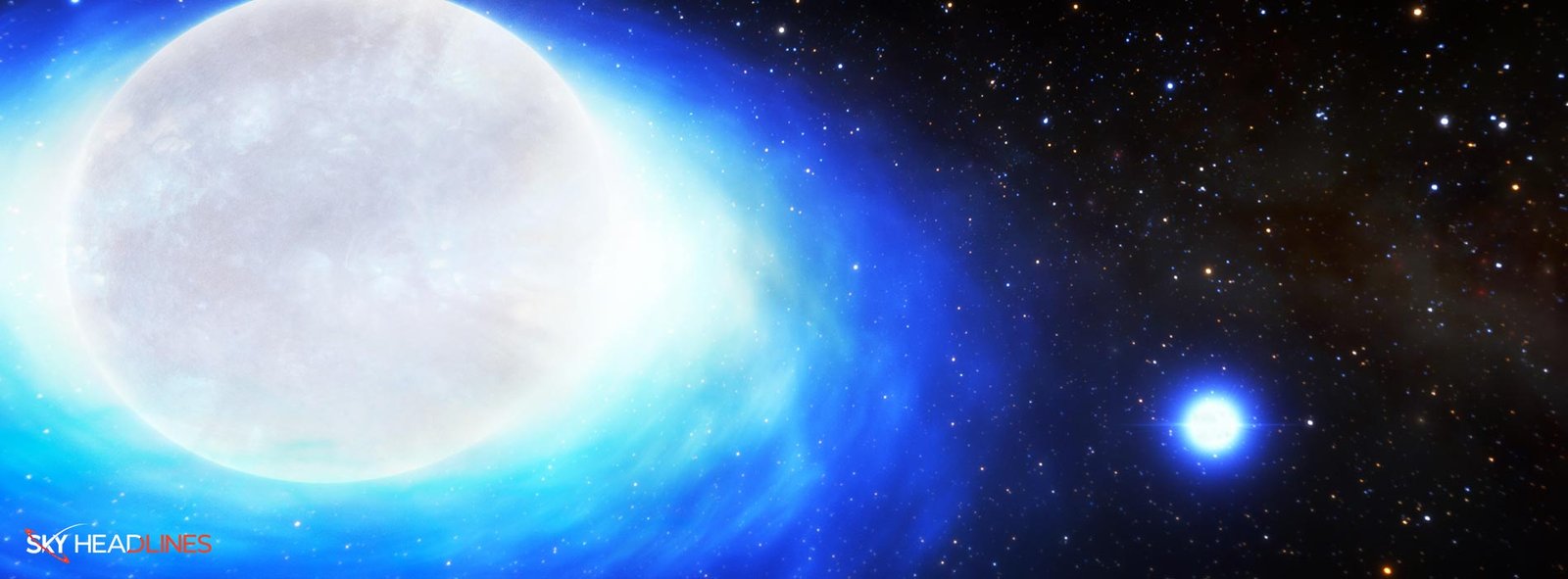Astronomers find first colliding twin stars in a kilonova explosion. Most of the time when there are spectacular explosions big stars die, however, some stars crackle like firecrackers!
About 11,400 light-years from Earth in the southern constellation of Puppis astronomers have recognized a neutron star. The neutron star is in SGR 0755-2933 which might be a dud firecracker. Scientists have researched this star. They say that earlier in its lifetime this star transfers high amounts of mass to its fellow astronomical body. Eventually, it was not left with enough material for an explosive death.
A rare cosmic event terminated it in a quiet “ultra-stripped” supernova. And leaves a super-dense remnant called a neutron star in its wake.
André-Nicolas Chené:
“André-Nicolas Chené” is an astronomer at the National Science Foundation’s NOIRLab research center. Moreover, he is a co-author of the new study. He said in a statement: “This remarkable binary system is essentially a one-in-10-billion system,”
Researchers also anticipated that the neutron star and its orbiting binary companion will someday collapse to evolve into a neutron star. The first clear example of a star system “mark” will ultimately trigger a cosmic explosion kilonova, during which two neutron stars fuse.
In 2017, the first kilonova was detected. Because of the observations of light and gravitational waves, astronomers recorded the aftermath of the event. This is the very first-time scientists will observe twin stars that will end in a kilonova explosion.
Previously, astronomers believed that only in spiral galaxies like our Milky Way exists one or two such systems. Now, more researchers are now getting involved in this latest study. As these observances help them better understand the history, evolution, and typically calm deaths of stars in such systems.
Chené says that astronomers are getting closer and closer every day to understanding the backstory behind kilonova: “For quite some time, astronomers speculated about the exact conditions that could eventually lead to a kilonova,”. Moreover, he said in a statement. “These new results demonstrate that, in at least some cases, two sibling neutron stars can merge when one of them was created without a classical supernova explosion.”
CPD-29 2176:
The sibling star “CPD-29 2176” revolves around the primary neutron star every 60 days and is very huge. Astronomers who are working on this research are researching this star to know more about the current star system formation and what might unfold in its future.
“This is not just a simple binary system”.
An undergraduate student of the Embry-Riddle Aeronautical University in Arizona “Clarissa Pavao” found the system. She found the system while scouring data captured by the Cerro Tololo Inter-American Observatory in Chile. And was analyzing how much light the twin stars emit at particular wavelengths.
She examined that the huge star had a highly circular orbit, after clearing all the noise from the data. This is a unique feature in binary star systems. This was a great breakthrough through which the researchers were able to state that the primary neutron star ended as a dud supernova.
When one of the stars in a binary system burns through its hydrogen and approaches the end of its main-sequence stage, it usually starts transferring mass to its companion star. The resulting end-of-life explosion frequently ejects companion stars from the systems and places them in highly elliptical orbits.
However, this did not appear to be the case in the intriguing system. Astronomers waded through thousands of models that described binary star systems similar to the one they were studying to better understand what might have happened at the end of SGR 0755-2933’s life. They only discovered two that matched.
The team then traced the star’s history and concluded that it behaved, for the most part, like any other massive star running out of fuel: near the end of its life, the star began transferring mass to its companion and, as scientists predicted, dwindled into a low-mass star with a helium core.
Marking the beginnings of precious heavy metals
The new research will help the researchers to learn more about the kilonova explosion event. And will also help astronomers to understand the origins of some of the heaviest elements in our universe.
Astronomers believe that CPD-29 2176 system will remain as it is for at least one million years more. Because the quiet supernova happened only once in a few million years. The latest research has uncovered that the twin stars will become an ultra-stripped supernova. And, will collapse into a neutron star just like the primary neutron star.
What astronomers have predicted about the two neutron stars?
The researchers who were working together on this research have predicted. They say that millions of years from now the two neutron stars will spiral slowly toward each other in a cosmic dance. Which will ultimately conduct another colliding in a kilonova explosion. Such explosions are said to be a source of immense quantities of heavy elements like platinum, xenon, uranium, and gold. Richardson said: “that get hurled into the universe,”.
Astronomers have long suspected that heavy metals released during such events float in the interstellar medium until they coalesced into asteroids, which then bombarded Earth as it formed and deposited the precious metals we see today. The 2017 kilonova explosion event alone ejected at least 100 Earth’s worth of precious heavy metals into space, suggesting that a failed supernova isn’t such a waste of space after all.
Noel Richardson:
Noel Richardson is an astronomer at Embry-Riddle and the lead author of the new study. He says that the twin stars lost so much mass during this process that it’s an end-of-life supernova. He said: “didn’t even have enough energy to kick the orbit into the more typical elliptical shape seen in similar binaries,”
The dying star also lacked the energy to expel its companion from the system, which is why the two stars are still orbiting.





